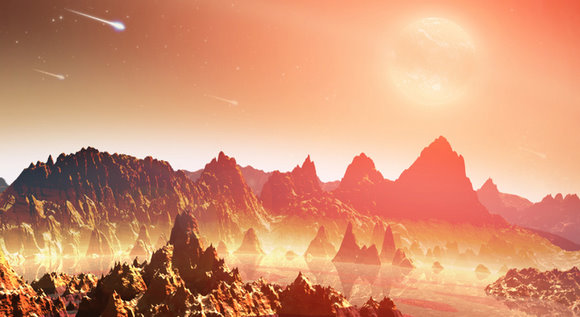New research using NASA's Spitzer Space Telescope suggests that planets orbiting stars colder than our Sun may be found in an environment where the mix of life-forming materials is different from ours.

"Life as we know it", this common phrase describes our search for living things in the universe. However, there is a possibility of life "as we do not know it". New research using NASA's Spitzer Space Telescope suggests that planets orbiting stars colder than our Sun may be found in an environment where the mix of life-forming materials is different from our own.
While life on Earth was formed, according to the latest theories, from a hot soup of different chemical substances (called pre-life or prebiotic chemicals), will the same mixture of life-forming substances form around other stars that have a different degree of heat? Prebiotic chemistry may develop differently in planets orbiting cold stars," says Ilaria Pascocchi, the lead researcher in a new study.
Pascucci and her team used Spitzer to examine the disks in which planets form, orbiting 17 cooler stars and 44 stars similar to the Sun. The stars are all 1-3 million years old, the age at which the planets form. The astronomers specifically examined the hydrogen-cyanide ratio against a molecule that serves as a baseline - acetylene. Using Spitzer's infrared spectrograph, a device that breaks down light into its components to reveal the signature of chemical substances, the researchers searched for the prebiotic chemical hydrogen cyanide in the material surrounding the stars and from which the planets eventually form. Hydrogen cyanide is a component of adenine, one of the basic components of DNA.
The researchers discovered hydrogen cyanide molecules in the disk of 30 percent of the yellow sun-like stars, but did not find the material at all around cooler stars such as red-leaning M dwarfs and brown dwarfs common in the universe.
The team discovered the baseline molecule - acetylene also around cold stars, demonstrating that their experiment is working well. This is the first time that any type of molecule has been detected in the disk surrounding cold stars. "It is possible that the ultraviolet light, which is stronger around our sun-like stars, may lead to a greater production of hydrogen cyanide," Pascucci said.
Young stars form inside cocoons of gas and dust that eventually collapse into disks. Gas and dust within the disks provide the materials from which the planets are formed. The scientists believe that the molecules that created the first version of life on Earth might have formed in such a disk. Prebiotic molecules such as adenine fell from the sky onto the young planet via meteorites that crashed into the surface.
"It is conceivable that life on Earth received a boost through a rich supply of molecules from space," Pascocchi said.
The findings have implications for recently discovered planets around M-dwarfs. Several of these planets appear to be enlarged versions of Earth and are thus called super-Earths, but none of them orbit within the life zone where water is in a liquid state. If such a planet is discovered, could it support life?
Astronomers are not sure about that. M-dwarfs have a propensity for strong magnetic outbursts that could be devastating to developing life. However, now, with Spitzer's new results, the scientists have additional information that allows them to make a decision: it is possible that these planets will lack hydrogen cyanide, a molecule that is believed to have eventually become part of us.
Now the question remains whether life will even be created there and if so, how will the difference between them and us be expressed?

6 תגובות
Certainly not around this - this is an illustrative illustration and most likely not a simulation of any real planet.
Asaf,
In our atmosphere the concentration of oxygen is 21%... why underestimate 🙂
I liked the attached picture the most. Haha (just)
A very interesting thing, even though there are things that you first have to look for the material about in order to understand what they allude to..
Thanks.
At the same time, on another planet..
"It is possible that they will find life in the stars closest to the sun, which have an atmosphere that even contains oxygen, in the deadly concentration of 4%..."
Direct all efforts towards the search for Earth-like planets and explore them. Everything else is interesting but less so.